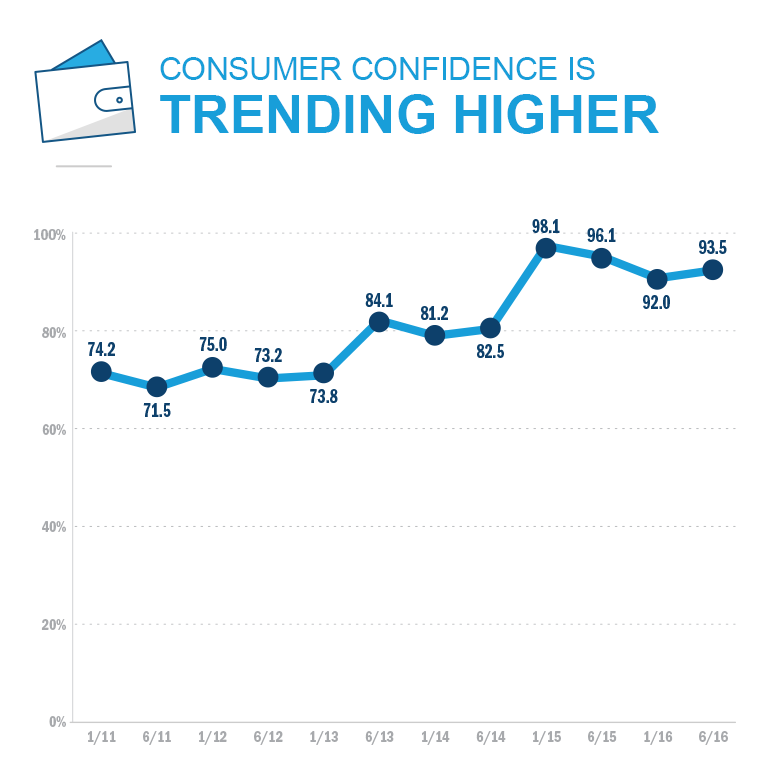Consumer spending is expected to rise this holiday season, but the benefits won’t be evenly spread. Mainstream retailers, under pressure from Amazon and off-price stores, are shifting risk to brands.
U.S. retailers are fast approaching the most important part of their year — starting with Black Friday
Retailers Are Taking Less Risk This Year
Last year, retailers underperformed because of the unseasonably warm weather in November and December — it was 72 degrees on Christmas Eve in New York City, a full 32 degrees higher than the historical average. The warm weather across much of the country led to underwhelming foot traffic at malls and particularly weak demand for cold-weather clothing. This resulted in retailers being left with excess inventory — well into 2016 — that they were forced to discount in order to clear.
This year retailers have reacted by being far more conservative with their inventories — a key part of their efforts to shift more business risk onto brands. With lower inventories, retailers won’t be left as exposed if sales disappoint once again this holiday season. This strategy puts more pressure on brands to provide extra inventory if and when sales are strong — brands, in effect, are being forced to carry more of the risk (and cost) of matching consumer demand or are faced with leaving potential revenue on the table.
Retailers Should Be In Better Shape
Despite the conservative approach, this year could turn out to be better for retailers. The National Retail Federation forecasts that consumer spending will rise by 3.6% this holiday season, well above the 10-year average of 2.5% and slightly ahead of the seven-year average of 3.4%, since the economic recovery began in 2009. Consumer confidence surveys are also heading in the right direction, with higher levels in 2015 and 2016 than in the previous four years.

Source: University of Michigan Consumer Sentiment Index as of October 2016
Online Sellers Are Poised To Dominate
Growing consumer appetites are welcome news for apparel retailers in the short term, but pressure from online competition continues unabated. Amazon is taking an increasingly larger share of consumer spending, notably in the apparel sector, where it is predicted to become the market leader next year, surpassing Walmart and Macy’s. As part of Amazon's (NASDAQ:AMZN) push into fashion, the online retail giant has revamped merchandise display on its website and has launched a fashion advertising campaign in the U.S. and Europe.
“Amazon is taking an increasingly larger share of consumer spending, notably in the apparel sector, where it is predicted to become the market leader next year.” — Daniel Kurland, retail analyst
Brick-and-mortar retailers continue to feel pressure from the change in Americans’ buying habits and the move online. Macy’s (NYSE:M), for example, has announced plans to shut 100 stores, or about 15% of its storefronts, by early 2017 as store-level profitability has suffered and the justification to keep these stores open has become more difficult. Traditional retailers are being forced to continue to invest in their own ecommerce initiatives or face the hard fact that they could lose an online sale to a competitor. The purchase of Jet.com by Wal-Mart StoresNYSE:WMT) for $3 billion in August highlights the high cost a traditional retailer is willing to pay to position themselves to effectively compete in the evolving and challenging environment.
There are some bright spots in the brick-and-mortar world, though. Off-price retailers like TJX Companies (NYSE:TJX), Burlington Stores (NYSE:BURL) and Ross Stores (NASDAQ:ROST) are doing well despite generally not having a big online presence. Consumers like their value proposition as well as the treasure hunt aspect to shopping in a place where you can’t be sure what you might find.
There has been an expectation that brands themselves would more easily navigate the shift in consumer shopping habits. The reasoning was that strong demand for a brand such as Nike (NYSE:NKE) could drive a consumer to make a Nike purchase, whether in store, online or directly from the brand. But it is increasingly apparent that brands face their own set of challenges, such as navigating the changing environment of store closures, retailer bankruptcies (such as Sports Authority) and inventory conservatism by traditional retailers.
Here too, Amazon is disrupting the traditional relationship brands have had with department stores. Stores traditionally negotiate upfront prices for goods with brands and, if a particular item doesn’t sell as well as hoped, go back to the brand to ask for a markdown allowance to help offset the loss in profitability of having to sell the goods at a lower price. Amazon is different in that it pushes hard on pricing upfront but does not go back to its partners for any markdowns, even if sales disappoint.
Online pricing is a critical area for brands. Many retailers have policies of matching competitors’ pricing, and in an online retail environment, price discovery is a much easier process for consumers. With the amount of price-matching that goes on in the industry, it means that if lower prices appear on Amazon — often the first place consumers search — low prices quickly reverberate across the industry. The situation is complicated by the fact that there are often multiple sellers of items on Amazon — from Amazon itself to the brands or other independent vendors. To try and control the retail and pricing landscape a little, many brands are choosing to work more closely with Amazon, providing the e-commerce giant with their products and even putting employees into Amazon offices to ensure the relationship runs smoothly.
Bottom Line
Whatever happens this holiday season, the main trends in the retail industry are likely to continue. The “Amazonification” of retail is here to stay. The trick for brands and retailers alike is to ensure that they are able to adapt and move in line with consumers’ changing habits.
Article by Tom West, Columbia Threadneedle Investments
